- HPLC Columns
- Close Menu ×
- C18 Columns
- Core-shell Columns
- C8 & C4 HPLC Columns
- HILIC HPLC Columns
- PFP & Phenyl HPLC Columns
- Bioseparation LC columns
- SEC HPLC Columns
- All HPLC Columns
- InertSustain C18 First choice for ultra-high inertness and high durability, delivering superior peak shapes with low back pressure.
- Inertsil ODS-3 Most popular C18, trusted for long-established methods, offering strong retentivity and high loading capacity.
- InertSustain AQ-C18 First choice for high-polarity compounds, delivering strong retention even under 100% aqueous mobile phases.
- Inertsil ODS-3V Validated version of ODS-3, designed for GLP/GMP compliance, ensuring batch-to-batch consistency.
- InertSustainSwift C18 Ultra-inert, fast-separation C18 for high-throughput LC-MS and LC-MS/MS with superior peak symmetry.
- InertSustain AX-C18 Mixed-mode C18 with anion exchange for strong retention of highly polar acidic compounds without ion-pairing.
- All C18 Columns visible-xs
- InertCore Biphenyl Core-shell biphenyl for UHPLC/HPLC with superior π-π selectivity and strong retention of aromatic compounds.
- InertCore C8 Core-shell C8 for UHPLC/HPLC with moderate hydrophobicity, enabling fast, efficient, reproducible separations.
- InertCore Plus C18 Core-shell C18 for UHPLC/HPLC with superior reproducibility, durability, and sharp peaks.
- InertSustain C8 Ultra-inert C8 column for rapid analysis of hydrophobic compounds with symmetric peaks across a wide pH range.
- Inertsil C8 Ultra-pure silica C8 column for rapid analysis of hydrophobic compounds, ideal for legacy methods.
- InertSustainSwift C8 Ultra-inert C8 column for low-polarity analytes, peptides, and oligonucleotides with optimized 200Å pore size.
- Inertsil C8-3 Strong retentivity, very inert, and low back pressure, based on the same silica and bonding as Inertsil ODS-3.
- Inertsil WP 300 Wide-pore C8 column for rapid, high-resolution separation of proteins and peptides with sharper peaks.
- Inertsil C4 Low-retentivity C4 column for rapid analysis of highly hydrophobic compounds like fat-soluble vitamins.
- All C8 & C4 Columns visible-xs
- InertSustain Amide First choice for HILIC mode, offering the strongest retention of polar compounds with superior stability in water-rich conditions.
- Inertsil HILIC Diol-bonded HILIC column for excellent peak shape and strong retention of highly polar basic compounds.
- InertSustain NH2 First choice for sugar analysis, offering superior stability, reproducibility, and compatibility with weakly acidic eluents.
- Inertsil NH2 Aminopropyl column for sugar analysis, highly retentive in normal phase with superior stability and reproducibility.
- ProteoSil HILIC Bioseparation-focused HILIC column, excelling in hydrophilic compound, peptide, glycan, and oligonucleotide analysis.
- All HILIC Columns visible-xs
- InertSustain PFP A pentafluorophenyl-modified column designed for enhanced separation of structurally similar compounds through multiple retention mechanisms, including π-π, dipole, and hydrogen bonding interactions.
- InertSustain Phenyl A directly bonded phenyl group gives the InertSustain Phenyl column unique reversed-phase selectivity, ideal for separating polar compounds and structural isomers via π-π and hydrogen bonding interactions.
- InertSustain Phenylhexyl A phenylhexyl-bonded column that offers complementary selectivity to traditional alkyl-chain columns, providing high inertness, reproducibility, and low back pressure.
Get the Right Column for Your Compound — InstantlyWhat compound are you analyzing? - Sample Preparation
- Close Menu ×
- SPE Cartridges & Columns
- Spin Columns
- Proteomics Products
- InertSep QuEChERS kit
- Cleanup/Separating Bulks
- SPE Manifolds
- ALL Sample Preparation
- InertSep C18 Silica sorbent with high end-capping, ideal for lipid removal & pesticide residue analysis.
- InertSep C18-ENV C18 sorbent with low end-capping, optimized for water analysis & anionic surfactant removal.
- InertSep HLB Versatile SPE column for extracting non-polar to highly polar compounds, with a wide pH range (1-14).
- InertSep C8 Silica sorbent with octyl groups, offering weaker retention than C18 for highly retained compounds.
- InertSep SCX Silica-based SPE column with strong cation exchange and non-polar interactions for enhanced retention.
- InertSep SAX Monofunctional C18 sorbent with medium end-capping, allowing secondary interactions for versatile use.
- All SPE Cartridges & Columns visible-xs
- MonoSpin C18 High-permeability spin column for peptide desalting, drug extraction, and fast biological sample preparation.
- MonoSpin ProA Fast Protein A spin column for high-purity IgG antibody purification with >90% recovery.
- MonoSpin C18-CX Mixed-mode spin column with C18 and cation exchange for enhanced basic drug recovery.
- MonoSpin Phospholipid TiO₂/ZrO₂-coated spin column for efficient phospholipid removal and matrix effect reduction.
- MonoSpin SAX Strong anion exchange spin column for fast extraction of acidic drugs with high recovery.
- MonoSpin TiO TiO₂ spin column for phospholipid removal and organophosphorus pesticide purification.
- All Spin Columns visible-xs
- Exosome Purification
- Desalting
- Digestion
- Fractionation
- Phosphopeptide Enrichment
- Centrifuge Accessories
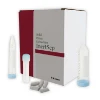 InertSep QuEChERS Kit High-purity extraction and cleanup kit for pesticide residue analysis in food and environmental samples.
InertSep QuEChERS Kit High-purity extraction and cleanup kit for pesticide residue analysis in food and environmental samples.
Get the Right Column for Your Compound — InstantlyWhat compound are you analyzing? - GC Columns
- InertCap 1MS General purpose, Hydrocarbons, PCBs, High Volatile solvents, Phenols
- InertCap 1 General purpose, Hydrocarbons, PCBs, High Volatile solvents, Phenols
- InertCap 5MS/Sil General purpose, Halogenated compounds, Phenols, Pesticides, FAME
- InertCap 5MS/NP General purpose, Halogenated compounds, Phenols, Pesticides, FAME
- InertCap 5 General purpose, Halogenated compounds, Phenols, Pesticides, FAME
- InertCap 624MS Residual solvents of Pharmaceuticals, VOCs, Alcohols
- All GC Columns visible-xs
Get the Right Column for Your Compound — InstantlyWhat compound are you analyzing? - Instruments
 LD249 Gas Leak Detector Compact, easy-to-use leak detector with thermal conductivity sensor for fast, accurate gas detection. Replaces the LD239.
LD249 Gas Leak Detector Compact, easy-to-use leak detector with thermal conductivity sensor for fast, accurate gas detection. Replaces the LD239. FM4: Air Sampler for PFAS Low-volume air sampler for PFAS enabling comprehensive analysis of both gas and particle phases in a single sampling using stage-optimized materials.
FM4: Air Sampler for PFAS Low-volume air sampler for PFAS enabling comprehensive analysis of both gas and particle phases in a single sampling using stage-optimized materials.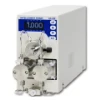 Intelligent Pump UI-32 Series Next-generation dual-plunger HPLC pump with ultra-low pulsation and automated pressure control for flow chemistry.
Intelligent Pump UI-32 Series Next-generation dual-plunger HPLC pump with ultra-low pulsation and automated pressure control for flow chemistry.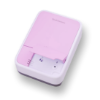 OralChroma Halitosis Measuring Device High-precision breath analyzer using gas chromatography to quantify VSCs in 4 minutes — fast, reliable, and maintenance-free.
OralChroma Halitosis Measuring Device High-precision breath analyzer using gas chromatography to quantify VSCs in 4 minutes — fast, reliable, and maintenance-free.
 LD249 Gas Leak Detector Latest model replacing LD239, with thermal conductivity detection for helium, hydrogen, and other gases.
LD249 Gas Leak Detector Latest model replacing LD239, with thermal conductivity detection for helium, hydrogen, and other gases.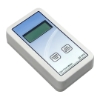 GF1010 Digital Gas Flowmeter Portable, volumetric meter for accurate GC gas flow measurement without gas selection.
GF1010 Digital Gas Flowmeter Portable, volumetric meter for accurate GC gas flow measurement without gas selection.
 Intelligent Pump UI-32 Series Next-generation dual-plunger HPLC pump with ultra-low pulsation and automated pressure control for flow chemistry.
Intelligent Pump UI-32 Series Next-generation dual-plunger HPLC pump with ultra-low pulsation and automated pressure control for flow chemistry.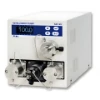 Intelligent Micro Pump MP-32 Series Compact micro pump with ultra-low pulsation and high-pressure stability, ideal for flow chemistry and precision dosing.
Intelligent Micro Pump MP-32 Series Compact micro pump with ultra-low pulsation and high-pressure stability, ideal for flow chemistry and precision dosing.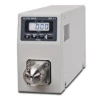 Auto BPR BP-11 Auto Back Pressure Regulator for the UI-22 Series, maintaining stable pressure for consistent flow.
Auto BPR BP-11 Auto Back Pressure Regulator for the UI-22 Series, maintaining stable pressure for consistent flow. PCS Pump SP-32 Series Single plunger pump with real-time pressure control and low-pulsation flow—ideal for precise fluid delivery.
PCS Pump SP-32 Series Single plunger pump with real-time pressure control and low-pulsation flow—ideal for precise fluid delivery.- All HPLC Pumps visible-xs
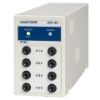 Gastorr AG Series Reliable, CPU-controlled degassing system for low-flow applications with independent chamber design.
Gastorr AG Series Reliable, CPU-controlled degassing system for low-flow applications with independent chamber design. Gastorr BG Series High-performance degassing system with real-time vacuum display and independent chamber design.
Gastorr BG Series High-performance degassing system with real-time vacuum display and independent chamber design. Gastorr FG-42 Solvent degassing system optimized for fluorinated solvents with real-time vacuum display.
Gastorr FG-42 Solvent degassing system optimized for fluorinated solvents with real-time vacuum display.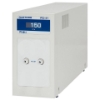 Gastorr PG Series High-flow degassing system for fractionating applications with real-time vacuum display.
Gastorr PG Series High-flow degassing system for fractionating applications with real-time vacuum display.- All Degassing Units visible-xs
- Accessories
- Close Menu ×
- HPLC Accesories
- SPE Accessories
- GC Accessories
- HPLC Tubing
- Filters
- HPLC Fittings
- Solvent Bottle Caps and Other Accessories
- Gradient Mixer
- Regulator
- IDEX Accessories
- HPLC Column Hardware and Other Accessories
- Vials
- SPE Vacuum Manifolds
- SPE Gravity Manifolds
- Cleanup/Separating Bulks
- Glass Chromatography Columns
- General SPE Accessories
- Applications & Industries
- Close Menu ×
- Featured
- PFAS Solutions Products and workflows for EPA and ISO-compliant PFAS testing in water, air, and soil.
- Flow Chemistry Solutions Integrated pumps and pressure regulators for continuous, high-temperature flow chemistry reactions.
- Life Science/Bio Products Spin columns and purification tools for antibody capture, protein cleanup, and bioseparation workflows.
- Gas/Air Sampling Equipment Sampling tools for capturing VOCs, aldehydes, and trace gases in environmental and industrial settings.
- Resources
- About
- Contact Us
Search
You have no items in your shopping cart.
Core-Shell HPLC Columns
Advanced Core-Shell Technology for Superior Performance
GL Sciences core shell HPLC columns deliver crisp peak shapes, outstanding inertness, and reproducible results—powered by advanced core shell HPLC technology. Trusted by analytical scientists for UHPLC and HPLC workflows, these columns offer best-in-class performance for validated methods and regulated labs.
- Home /
- HPLC Columns /
- Core-shell Columns

InertCore Plus C18
Designed for maximum stability and exceptional batch-to-batch consistency, InertCore Plus C18 combines core shell technology with a robust octadecyl phase to deliver outstanding retention, sharp peak symmetry, and high durability. This column is ideal for demanding UHPLC/HPLC analyses and routine workflows where reproducibility is critical.

InertCore Biphenyl
Specifically designed for advanced aromatic compound separations, InertCore Biphenyl features a core shell structure that offers high π-π interaction selectivity and robust hydrophobic retention. This column delivers sharp, reliable peaks for complex mixtures—ideal for method development and challenging analyses.

InertCore C8
Engineered for rapid and efficient analysis of moderately hydrophobic compounds, InertCore C8 features a core shell structure that ensures consistent peak shapes and reliable reproducibility. Its robust octyl phase delivers optimal retention and stability, making it ideal for routine LC method development and high-throughput workflows.
What Is Core Shell HPLC Technology?
Core shell HPLC columns mark a significant advancement in chromatographic science, offering a unique solution to the classical trade-off between efficiency and operating pressure. Instead of fully porous particles, these columns are packed with innovative particles consisting of a solid, impermeable core coated by a thin, porous shell. This design streamlines analyte migration and substantially limits longitudinal diffusion. As a result, users benefit from exceptionally sharp, well-resolved peaks and dramatically improved plate numbers, even without the need for ultra-high pressures.

Scientific studies and real-world applications consistently demonstrate that core shell HPLC technology allows analysts to achieve the high resolution expected from sub-2 µm columns, yet with system backpressures manageable for conventional HPLC. In practice, this means laboratories can accelerate method development, streamline validated workflows, and scale up analyses—without hardware compromise or excessive solvent consumption.
Key Advantages of Core Shell Technology
Superior Efficiency & Resolution:
By combining a precisely engineered particle size with the shortened diffusion path of core shell design, these columns consistently deliver higher theoretical plate numbers and improved separation. This translates to greater confidence in peak identification and quantification, particularly for structurally similar analytes or samples with complex matrices.

Superior Efficiency & Resolution:
By combining a precisely engineered particle size with the shortened diffusion path of core shell design, these columns consistently deliver higher theoretical plate numbers and improved separation. This translates to greater confidence in peak identification and quantification, particularly for structurally similar analytes or samples with complex matrices.
Reduced Run Time and Solvent Use:
Enhanced mass transfer kinetics not only shorten analysis times, but also lower the overall volume of organic solvents required per run. This increase in laboratory efficiency supports sustainability initiatives and reduces operational costs, which is crucial for high-throughput or environmentally conscious labs.
Low System Backpressure:
Core shell columns are designed to offer the high speed and resolution of smaller particle columns, but at the pressure profile of standard 3 µm formats. This makes upgrading performance possible without investing in expensive UHPLC equipment—ensuring compatibility with both modern and legacy HPLC systems.
Batch-to-Batch Consistency:
Through rigorous manufacturing controls and meticulous quality assurance, GL Sciences core shell columns deliver highly reproducible results, minimizing run-to-run and lot-to-lot variability. This level of consistency is essential for labs operating under strict regulatory or QA requirements.
Application Versatility & Use Cases
GL Sciences offers a diverse core shell column lineup—Biphenyl, C8, and Plus C18—each tailored for specific analyte chemistries and separation challenges. Whether the goal is resolving aromatic isomers, optimizing peptide analysis, or developing robust LC methods for routine pharmaceutical QC, these columns excel in flexibility and predictability.
For regulated laboratories and validated workflows, core shell HPLC technology is especially advantageous. Reproducible retention times, excellent peak symmetry, and stable selectivity make these columns the method developer’s choice—trusted worldwide for research, QA/QC, and regulated environments alike.
| Column | InertCore Plus C18 Learn More → | InertCore C8 Learn More → | InertCore Biphenyl Learn More → |
 |  |  | |
| Base Material | Core-shell type silica gel | Core-shell type silica gel | Core-shell type silica gel |
| Particle Size | 2.6 µm | 2.6 µm | 2.6 µm |
| Solid Core Size | 2.0 µm | 2.0 µm | 2.0 µm |
| Surface Area* | 200 m²/g | 200 m²/g | 200 m²/g |
| Pore Size | 90 Å (9 nm) | 90 Å (9 nm) | 90 Å (9 nm) |
| Functional Group | Octadecyl (C18) | Octyl (C8) | Biphenyl |
| End-capping | Yes | Yes | Yes |
| Carbon Loading* | 15% | 10% | 10% |
| Recommended pH Range | 1–10 | 1.5–9 | 1.5–8.5 |
| USP Code | L1 | L7 | L11 |
| Max Pressure | 100 MPa (2.1 mm I.D.) 60 MPa (3.0 / 4.6 mm I.D.) | 100 MPa (2.1 mm I.D.) 60 MPa (3.0 / 4.6 mm I.D.) | 100 MPa (2.1 mm I.D.) 60 MPa (3.0 / 4.6 mm I.D.) |
*Value calculated for the porous layer only (core excluded).
Learn More: InterCore Plus C18 → | InerCore C8 → | InerCore Biphenyl →
Need Expert Help?
Connect with a GL Sciences specialist for help selecting the right core-shell HPLC column for your application.
Refine
Categories
- GC Columns
- HPLC Columns
- C18 Columns
- Core-shell Columns
- C8 & C4 HPLC Columns
- C30 HPLC Columns
- PFP & Phenyl HPLC Columns
- Cyano HPLC Columns
- HILIC HPLC Columns
- Normal Phase HPLC Columns
- SEC HPLC Columns
- Ion Exchange HPLC Columns
- Monolithic HPLC Columns
- Reversed Phase HPLC Columns
- Bioseparation LC columns
- Application Specific Columns
- HPLC Guard Columns
- Preparative HPLC Columns
- HPLC Column Equivalents
- GC Accessories
- Sample Preparation
- Life Science/Bio Products
- Gas/Air Sampling Equipment
- Other Products
- Instruments
- HPLC Accessories
Get Chromatography Methods That Save You Time — Backed by Real Data
Sign up to receive chromatography methods and practical insights designed to save you time and support real-world workflows.
Wait...
We respect your privacy & will never share your information.
Contact Info
- Contact Us
- Torrance, CA, USA
Customer Service
My Account
Copyright © 2025 GL Sciences Inc.. All rights reserved.
